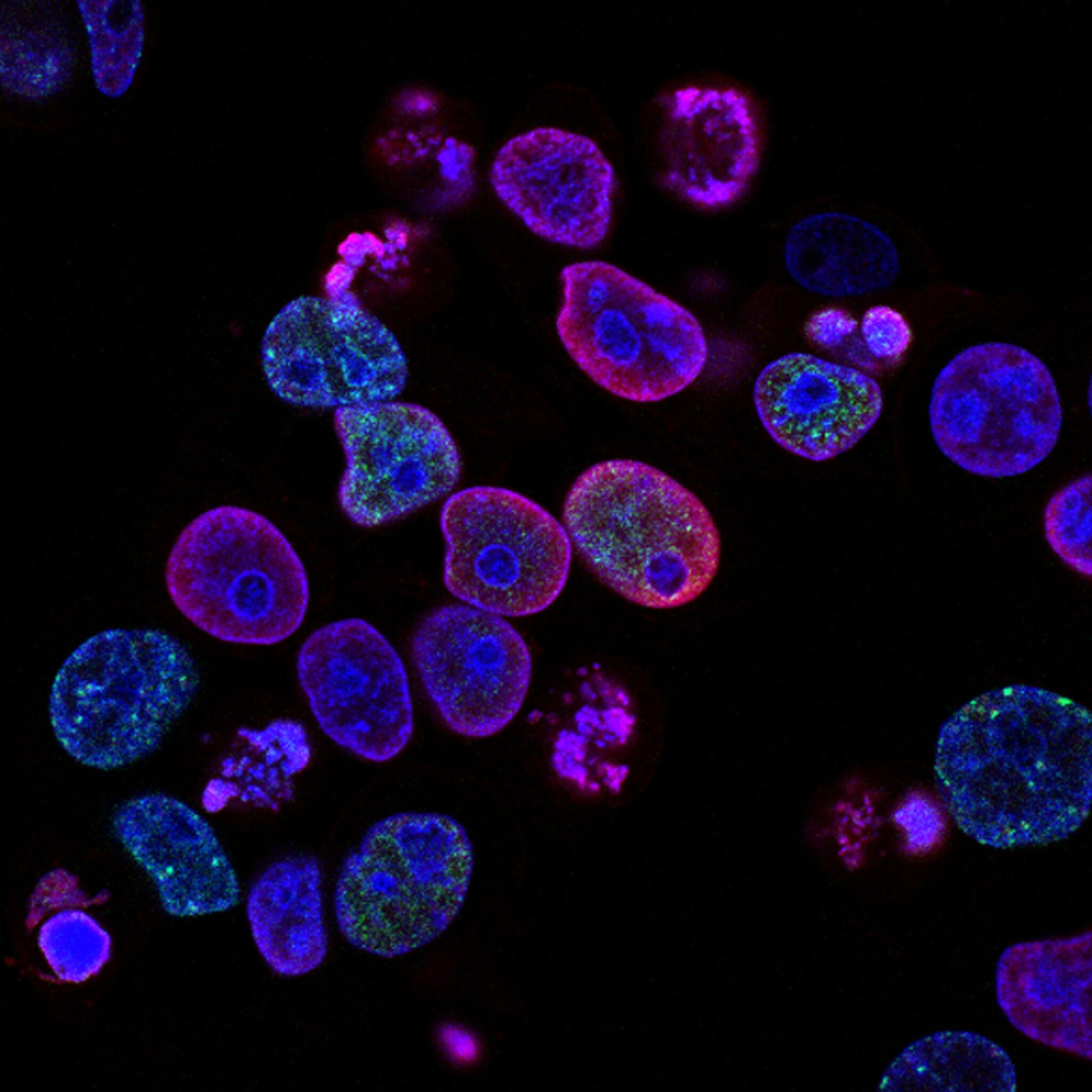Are you a science enthusiast? Do you love to keep up with the latest scientific discoveries and breakthroughs? If so, then this blog post is for you! From space exploration to medical advances, there are numerous exciting developments happening in the world of science right now. In this article, we’ll explore some of the top stories that are making waves in the scientific community. Get ready for an exhilarating ride through some groundbreaking discoveries and their potential implications on our world!
The List:
1. New Horizons’ Ultima Thule Flyby
NASA’s New Horizon spacecraft has achieved yet another milestone in space exploration by flying past the farthest object ever explored by humankind, called “Ultima Thule”. This icy world located 4 billion miles from Earth is a fascinating subject for researchers, who are hoping to uncover more about its composition and origins. The spacecraft captured stunning images of this mysterious object that reveal its strange shape and surface features.
2. The First-Ever Image of a Black Hole
In April 2019, scientists finally unveiled the first-ever image of a black hole – an event that had been eagerly awaited for years. A team of international researchers used eight telescopes across the globe to capture this groundbreaking image from galaxy M87. By visually confirming what was previously only theoretical, this discovery opens up new avenues for studying these enigmatic objects further.
3. The First Gene-Edited Babies
A shocking announcement shook the scientific community when Chinese researcher He Jiankui claimed he had created the first gene-edited babies using CRISPR technology in late 2018. Though it caused ethical concerns over human genetic editing, it also showed how fast science is advancing while raising important questions about where we draw lines on research boundaries.
4. A revolutionary CRISPR-based tool for fighting cancer
Scientists have developed an innovative CRISPR-based technique known as PAC-MAN that can target and destroy cancerous cells without harming healthy ones nearby effectively – paving the way towards personalized medicine with fewer side effects than traditional treatments.
5.
The discovery of water on a potentially habitable exoplanet
Astronomers announced they found water vapor above K2-18b (an exoplanet roughly twice Earth’s size), bringing us one step closer to finding life elsewhere in our universe! While there’s no evidence thus far that suggests life exists on K2-18b or any planet besides Earth, the discovery of water on this exoplanet means that there are potentially
1. New Horizons’ Ultima Thule Flyby
On New Year’s Day 2019, NASA’s New Horizons spacecraft made history by completing the most distant flyby ever conducted. The probe flew past Ultima Thule, a small icy world located in the Kuiper Belt, more than four billion miles away from Earth.
This event marked the first time that humans have explored an object so far away from our planet and provided scientists with valuable data about this mysterious region of space. By studying Ultima Thule, researchers hope to gain insights into how our solar system formed and evolved over time.
New Horizons captured stunning images of the rocky body as it passed by at speeds approaching 32,000 miles per hour. These images revealed that Ultima Thule is actually two separate objects fused together in what is known as a “contact binary.” Scientists believe that these types of celestial bodies may be common throughout the universe.
The successful flyby was a testament to human ingenuity and technological advancement. It demonstrated our ability to explore even the most remote regions of space and push beyond previous limits. The mission has inspired future generations of scientists and engineers who dream of exploring further into deep space.
As we continue to learn more about Ultima Thule and other distant worlds like it, we are unlocking new mysteries about the origins of our solar system and gaining a deeper understanding of our place in the universe.
2. The First-Ever Image of a Black Hole
On April 10th, scientists unveiled the first-ever image of a black hole. The picture was captured by the Event Horizon Telescope (EHT), which is made up of eight telescopes scattered across the globe. Together they create an Earth-sized virtual telescope that can capture images with unprecedented detail.
The black hole in question is located at the center of Messier 87, a massive galaxy about 55 million light-years away from Earth. It has a mass equivalent to 6.5 billion suns and measures about 40 billion km across – three times larger than our solar system!
The image itself is truly awe-inspiring. It shows a bright ring-like structure surrounding a dark region known as the “shadow” or “event horizon” – where gravity becomes so strong that nothing, not even light, can escape its pull.
This groundbreaking achievement opens up new avenues for studying these mysterious objects and testing theories of gravity in extreme environments. Who knows what other wonders we’ll uncover as we continue to venture further into space?
3. The First Gene-Edited Babies
The news of the first gene-edited babies shook the world in late 2018 when a Chinese scientist revealed that he had edited the genomes of twin girls before they were born. He claimed to have used CRISPR technology to make them immune to HIV, but his actions were widely condemned by scientists and ethicists alike.
While there is still much debate about whether or not gene editing should be used on humans, this experiment has opened up important discussions about the ethics surrounding genetic engineering. The scientific community must continue to weigh the potential benefits against possible risks before making any further advancements in this field.
In addition to ethical concerns, there are also technical challenges facing researchers who wish to safely and effectively edit human genes. There is a risk of unintended consequences such as off-target mutations or other unforeseen effects that could have serious health implications for individuals.
Despite these obstacles, many scientists remain optimistic about the potential applications of gene editing technology. It could potentially cure or prevent inherited diseases and disorders, revolutionizing medicine as we know it. However, it’s essential that research in this area continues with caution and transparency so that society can benefit from its advances while avoiding any unintended consequences.
4. A revolutionary CRISPR-based tool for fighting cancer
Cancer is a devastating disease that affects millions of people around the world. While traditional treatments such as chemotherapy and radiation have been effective in some cases, they can also cause significant side effects and may not always be successful.
That’s why the development of a revolutionary CRISPR-based tool for fighting cancer is so exciting. This new technology allows scientists to target specific genes within cancer cells, potentially leading to more effective and less harmful treatments.
The CRISPR system works by using an enzyme called Cas9 to cut DNA at specific locations. When this technique is applied to cancer cells, researchers can remove or repair faulty genes that are contributing to tumor growth.
One recent study used CRISPR to target two genes known to be involved in promoting pancreatic cancer. The results were promising – when these genes were removed from cancer cells, their ability to form tumors was greatly reduced.
While there is still much work to be done before this technology becomes widely available for treating human cancers, it represents a promising new avenue for research and treatment. And with continued innovation in the field of gene editing, we may see even more groundbreaking discoveries in the years ahead.
5. The discovery of water on a potentially habitable exoplanet
Scientists have recently discovered water on a potentially habitable exoplanet, which is located in the habitable zone of its host star. The planet, called K2-18b, is twice the size of Earth and located 110 light-years away from us.
The discovery was made using data collected by NASA’s Hubble Space Telescope. The telescope measured the absorption of light as it passed through the exoplanet’s atmosphere during transit. This allowed scientists to identify water vapor in the planet’s atmosphere.
This finding has been hailed as a significant step forward in our search for life beyond our solar system. Water is considered an essential ingredient for life as we know it, and the discovery suggests that there could be other habitable worlds out there waiting to be found.
However, while this discovery is exciting, there are still many questions left unanswered about K2-18b and its potential for supporting life. For example, we don’t yet know if there are any other key ingredients necessary for life present on this exoplanet.
Despite these uncertainties, this discovery marks an important milestone in our understanding of planetary systems beyond our own. It highlights how far we’ve come with space exploration and how much more we have yet to learn about what lies beyond our home planet.
6. New evidence that the universe is expanding faster than we thought
These top science stories have captured our attention and sparked our curiosity about the world around us. From space exploration to medical advances, the discoveries and breakthroughs of today are shaping the future of tomorrow.
The latest evidence that suggests that the universe is expanding faster than we thought only adds to this excitement. This discovery could change our understanding of the cosmos and lead to new questions and ideas for scientists to explore.
As we continue to push boundaries in science, there’s no telling what other groundbreaking revelations may be just around the corner. But for now, let’s celebrate these incredible achievements and look forward with anticipation as we embark on another year of scientific discovery.








